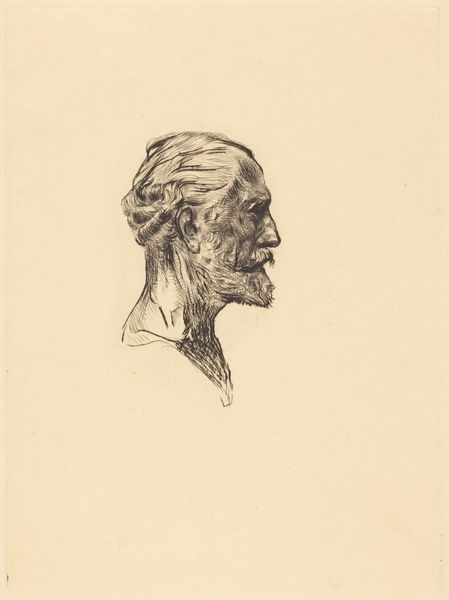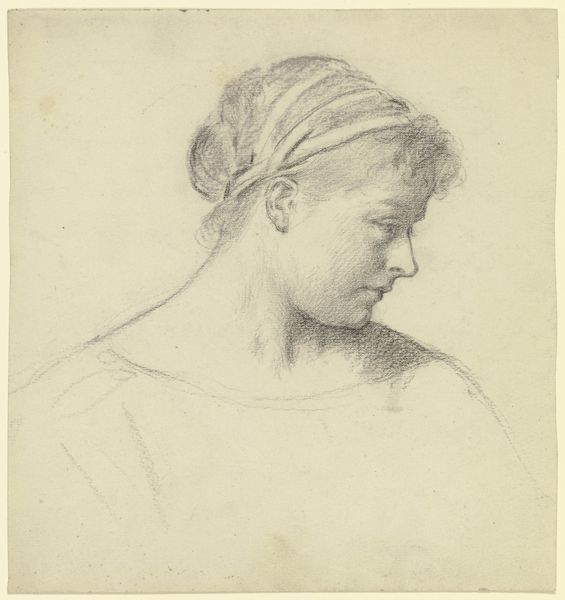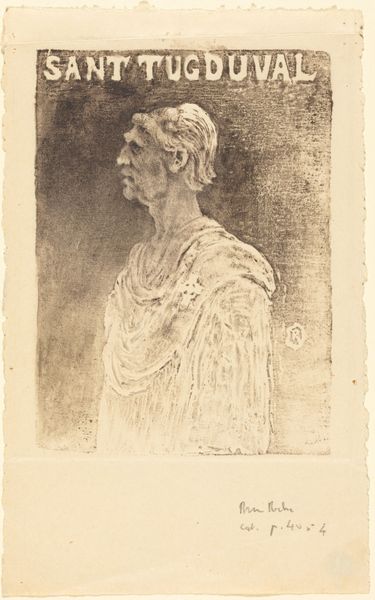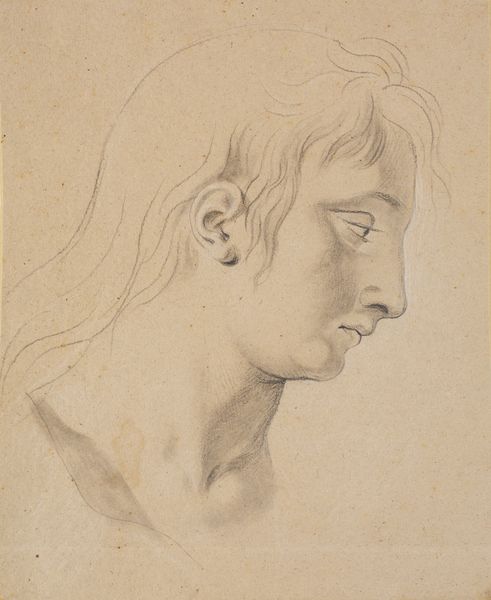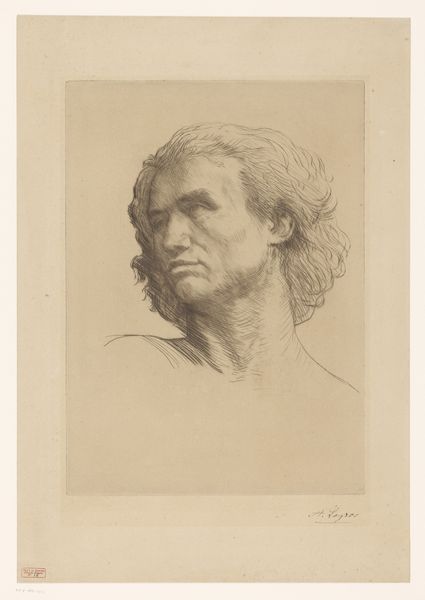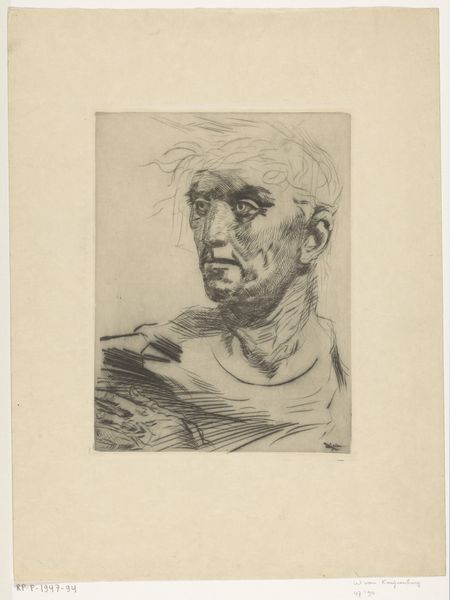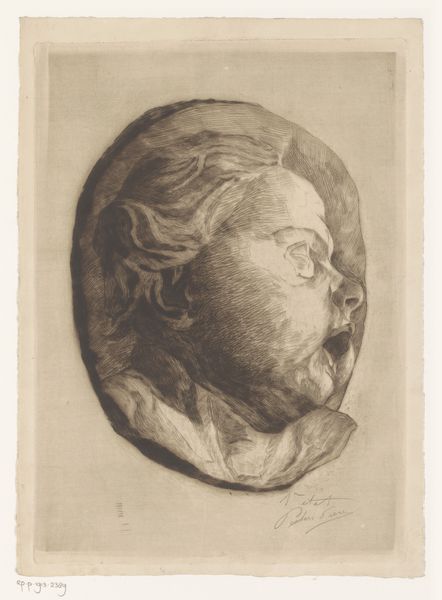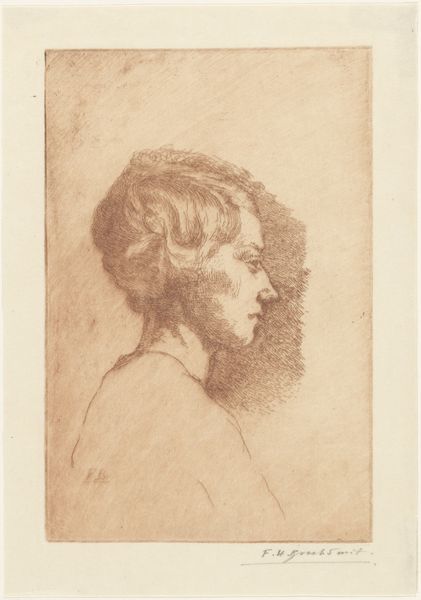
print, etching
#
portrait
#
medieval
# print
#
etching
#
line
#
portrait drawing
Dimensions: height 180 mm, width 126 mm
Copyright: Rijks Museum: Open Domain
Curator: I find the mood in Willem van Konijnenburg's "Portret van een onbekende man" incredibly somber, almost meditative. Editor: And this print, an etching most likely created sometime between 1878 and 1943, invites a particular consideration of its making. Look closely at those incredibly fine lines, achieved through acid-etching a metal plate. How does this method influence our engagement with the portrait? Curator: Well, etching, unlike say lithography, has a history intertwined with the artisanal. These marks speak to a painstaking labor, not a mechanical reproduction. Also, in many institutional settings, drawing used to be deemed critical practice to become better painter/sculptor. We can think of the portrait as a record, as a practice. It reminds us the studio context as a learning site. Editor: Exactly! And observe the use of line—sparse, yet deeply expressive. Each stroke feels deliberate, revealing both the skill of the artist and the vulnerability of the medium. How might the choice of such an exacting process reflect or comment on the identity, or lack thereof, in the title, of the 'unknown man?' Curator: Perhaps Konijnenburg is interrogating ideas of identity, class and the very mechanics of portraiture itself. I am tempted to consider this work by association. It’s a portrait made through etching which in essence questions conventional markers of the upper class sitters of the tradition, through making. In other words, making has the political force here. Editor: But how does this piece function as a public artwork? I'm also thinking about how art history as a discipline shapes the perception of etching in particular. Often labeled 'minor art,' printmaking's cultural worth continues to be debated within larger institutional value systems. What are your thoughts? Curator: These labels and hierarchies are exactly what this artwork challenges. By choosing etching, traditionally associated with craft, and creating a fine art portrait, Konijnenburg blurs those artificial boundaries, democratizing the medium. It compels us to confront our own assumptions about value and artistry, both within and outside the gallery walls. Editor: I see it now. Curator: It seems this artwork challenges our ingrained cultural norms associated with portraiture—from status and power, to labor and art.
Comments
No comments
Be the first to comment and join the conversation on the ultimate creative platform.


